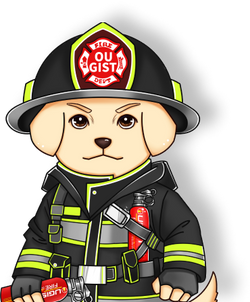Fire safety is not a matter to be taken lightly, as it can have devastating consequences for both your home and your loved ones. Being proactive and informed about fire prevention, preparedness, and recovery is essential for creating a secure living environment. In this comprehensive guide, we will cover everything you need to know about making your home fire-safe, providing fire prevention tips, understanding fire recovery services, and ensuring your family's safety in case of emergencies.

-
Selecting the Right Materials for Fire Prevention: Protecting your home starts with choosing the right materials. Opt for fire-resistant options such as brick, stucco, or stone siding, and consider metal-framed windows that naturally retard fire. Roofing materials like tile or metal offer added protection. Eliminate flammable debris near your home, install fire-proof safes for important documents, and switch to battery-powered flameless candles to reduce fire risks.
-
Equip Your Home with Fire Safety Essentials: Install smoke detectors and carbon monoxide detectors on every floor, checking their batteries biannually. Keep fire extinguishers on each floor, especially in the kitchen, and teach family members how to use them. Remember to keep space heaters away from flammable materials, and switch to low-heat LED bulbs to prevent overheating.

-
Educate Your Family about Fire Safety: Teach your kids the basics of fire safety, such as not playing with matches and avoiding flammable materials. Conduct fire drills and ensure your children know how to recognize and respond to smoke alarms. Teach them the "stop, drop, and roll" technique and practice escaping safely from different areas of your home.
-
Creating a Family Fire Escape Plan: Develop a comprehensive fire escape plan with multiple exit routes. Designate a safe meeting point outside your home and ensure all family members understand the plan. Practice fire drills regularly to reinforce the escape plan and ensure a calm response during emergencies.

-
Knowing What to Do in Case of Fire: In the event of a fire, prioritize safety over possessions. Have a fire ladder accessible in each adult bedroom for multi-story homes. Teach children to crawl to safety and cover their nose and mouth with fabric. Set a designated meeting spot for your family, and follow your escape plan calmly and efficiently.
-
Understanding Fire Recovery Services: Familiarize yourself with fire recovery services before a crisis occurs. Stay out of fire-damaged homes until authorities declare them safe to enter. Contact your insurance agent promptly and document damage with photographs. When in doubt, consult specialists for cleaning and repairs, especially if electrical or HVAC systems are affected.


